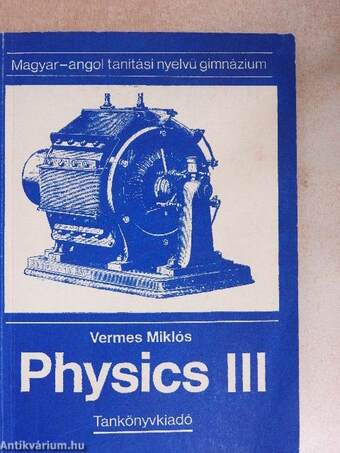1.067.073
kiadvánnyal nyújtjuk Magyarország legnagyobb antikvár könyv-kínálatát

VISSZA
A TETEJÉRE
JAVASLATOKÉszre-
vételek
Physics III
Magyar-angol tanítási nyelvű gimnázium/For the third classes of academic secondary schools
| Kiadó: | Tankönyvkiadó |
|---|---|
| Kiadás helye: | Budapest |
| Kiadás éve: | |
| Kötés típusa: | Ragasztott papírkötés |
| Oldalszám: | 210 oldal |
| Sorozatcím: | Magyar-angol tanítási nyelvű gimnázium |
| Kötetszám: | |
| Nyelv: | Angol |
| Méret: | 20 cm x 14 cm |
| ISBN: | 963-18-3033-0 |
| Megjegyzés: | Fekete-fehér ábrákkal illusztrálva. Raktári száma: 13330/A. |
naponta értesítjük a beérkező friss
kiadványokról
naponta értesítjük a beérkező friss
kiadványokról
Előszó





